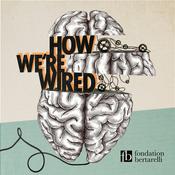Available Episodes
5 of 47
- Why C is not going anywhere (but Rust might replace it anyway)Join Seve (founder of tscircuit) and Matt (founder of atopile) as they venture deep into the rapidly changing world of electronics, where hardware is finally catching up to software. This episode tackles the growing movement of designing circuit boards using code, not schematics, and explores how compiler-style toolchains are revolutionizing firmware, FPGA workflows, and hardware reliability. They also explore: * Wi-Fi HaLow: A deep dive into the 900MHz standard that offers kilometer-long range for drones and IoT, and how it challenges LoRa. * The “Monks” of SQLite: Why the SQLite team is considered the “monastery” of open source and their commitment to no API breaks until 2050. * Semver vs. Reality: Why Semantic Versioning breaks down in TypeScript environments and Seve’s “Pragmatic Versioning” alternative. * The Future of Connectivity: How Starlink’s direct-to-cell technology is effectively placing cell towers in space. * AI & DSLs: Whether LLMs will end the era of new programming languages in favor of Domain Specific Languages or TypeScript supremacy. Whether you are a firmware engineer looking at Rust, a hardware designer interested in long-range wireless, or a developer managing complex dependencies, this discussion offers a fresh perspective on the intersection of code and hardware. 00:00 Hiking Yosemite and the Adirondacks 06:28 Rust in firmware 07:06 Truth Discovery 10:21 Safety in Embedded: Rust vs. C/C++ 12:42 Airbags & Real-Time Constraints 14:55 Haskell, OCaml, and Functional Programming 16:44 Why Semver doesn’t work for TypeScript 17:51 Ecosystem development: 200 Releases a Day 26:42 Using OCaml for FPGA Design (Jane Street) 29:29 The “Monks” of SQLite & 2050 Compatibility 33:40 Will AI stop the invention of new languages? 39:05 Wi-Fi HaLow: 900MHz Long-Range Wi-Fi 43:50 Wi-Fi HaLow for Drones & Antenna Physics 48:07 Starlink Direct-to-Cell Technology This is a public episode. If you would like to discuss this with other subscribers or get access to bonus episodes, visit electronics.dev--------51:36
- Why Reversible Computing Could Save Moore’s Law [Mini Episode]Seve (founder of tscircuit) and Matt (founder of atopile) unpack one of the most radical ideas in modern electronics: reversible computing. As Moore’s Law slows down, the biggest bottleneck is heat — but what if computation itself could be rethought to conserve energy instead of wasting it?In this episode, they explore:* The principles of reversible/thermodynamic computing* How MOSFET charge recycling offers a real-world analogy* Why reinventing chip architectures (CUDA, ISAs, RISC-V) is so challenging* The promise and pitfalls of open-source hardware ecosystems* Lessons from Meta Connect’s failed demos and the future of hardware/software integration* Why “hard tech” founders still matter in a software-driven worldFor hardware engineers, embedded developers, and anyone curious about the future of chips, this episode connects deep insights into electronics with the big questions of computing’s next era. This is a public episode. If you would like to discuss this with other subscribers or get access to bonus episodes, visit electronics.dev--------16:25
- Why the iPhone Air is Basically an Apple Watch with Extra Battery [Mini Episode]Apple’s new iPhone Air might look like a futuristic, ultra-thin smartphone, but under the hood, it’s closer to an Apple Watch strapped to a giant battery. In this episode, Seve (founder of tscircuit) and Matt (founder of atopile) break down the wild engineering behind making phones slimmer than ever: iPhone Air Deep Dive: * Why the iPhone Air’s PCB layout looks more like a smartwatch than a phone * How Apple carved down the circuit board to a tiny “plateau” under the camera * The real limits of *batteries, casings, and glass thickness* * Why reducing *just 1 mm* of thickness is brutally hard * Tricks like *embedded resistors* inside the PCB stack-up * Why thinner phones aren’t just aesthetic — they change the entire board design Beyond the iPhone — Startup Life & Silicon Valley: * What “honest tells” are — from biology to founder culture * The strange power moves of Silicon Valley investors and founders * Why outfits are status signals in tech * Lessons from Reddit’s messy founder history * How investor–founder dynamics shifted in the past 15 years * The psychology of saying “no” to meetings (and why it makes you work harder) If you’ve ever wondered how Apple keeps packing a supercomputer into a device smaller than your wallet or what it’s really like building hardware startups in Silicon Valley, this episode blends both worlds. This is a public episode. If you would like to discuss this with other subscribers or get access to bonus episodes, visit electronics.dev--------15:25
- Why PCB Auto-Routing Is Harder Than You Think (And How AI Might Fix It)Auto-routing sounds simple: connect the traces, hit “go,” and let the software handle the rest. But in reality, PCB auto-layout is one of the hardest problems in electronics.In this episode of electronics.dev, Seve (founder of tscircuit) and Matt (founder of atopile) break down why auto-routing is so difficult: from impedance matching and creepage rules to high-speed signal integrity and noise coupling.They also explore the new wave of AI-driven solutions and whether they can finally deliver on the promise of hands-free PCB layout. Along the way, the duo dives into:* Why traditional auto-routers often fail on complex boards* The trade-offs between speed and quality in modern routing algorithms* How engineers use SAT solvers and constraint systems to optimize pin assignments* What tools like Quilter and DeepPCB are getting right (and wrong)* Why AI-assisted optimization might work better than full AI-generated layouts* How the future of PCB design could be shaped by deterministic solvers + AI refinementIf you’ve ever wondered why PCB design still feels like an art form, and whether AI will finally make auto-routing reliable, this conversation offers an inside look at the problem and the potential solutions. This is a public episode. If you would like to discuss this with other subscribers or get access to bonus episodes, visit electronics.dev--------58:14
- Why Custom Chips Are the Next Big Thing in Hardware DesignCustom chip design is no longer reserved for billion-dollar tech giants. In this episode, Seve (founder of tscircuit) and Matt (founder of atopile) explore how advances in tooling, prototyping, and the EDA industry are making custom silicon accessible to startups, makers, and engineers like never before.You’ll discover:* How Tesla’s early battery management challenges led to unique custom chip solutions* The surprising economics of a $7K run for 5,000 prototype chips* Why most microcontrollers still use massive 90nm processes, and why that works* Analog vs. digital scaling: where Moore’s Law still applies and where it doesn’t* Funding trends in hardware startups, from Diode to SnapMagic* The state of open-source electronics after the OpenSauce conference* CNC milling “micron accuracy” claims: myth vs. reality* Why PCB milling often isn’t worth the time for serious prototypingWhether you’re a hardware engineer, startup founder, or electronics enthusiast, this conversation pulls back the curtain on the tools, economics, and decisions shaping the next generation of hardware. This is a public episode. If you would like to discuss this with other subscribers or get access to bonus episodes, visit electronics.dev--------35:21
More Science podcasts
Trending Science podcasts
About electronics.dev
The latest news, insights and discussion around building electronics with code. electronics.dev
Podcast websiteListen to electronics.dev, The Psychology Podcast and many other podcasts from around the world with the radio.net app

Get the free radio.net app
- Stations and podcasts to bookmark
- Stream via Wi-Fi or Bluetooth
- Supports Carplay & Android Auto
- Many other app features
Get the free radio.net app
- Stations and podcasts to bookmark
- Stream via Wi-Fi or Bluetooth
- Supports Carplay & Android Auto
- Many other app features


electronics.dev
Scan code,
download the app,
start listening.
download the app,
start listening.





































